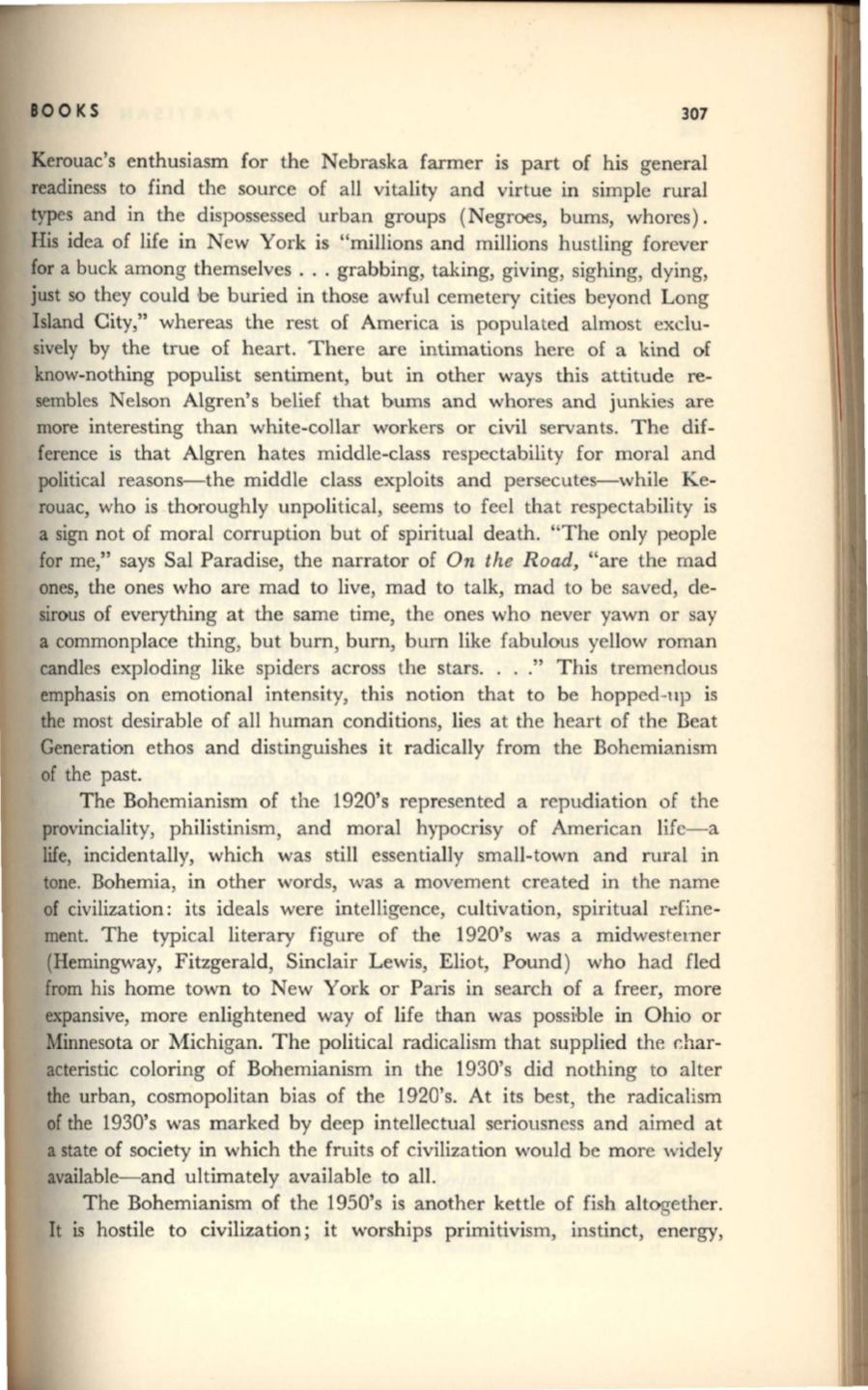
BOOKS
307
Kerouac's
enthusiasm
for the Nebraska farmer is part of
his
general
readiness to find the source of all
vitality
and
virtue in simple
rural
types and
in
the dispossessed urban groups (Negroes, bums, whores).
His idea of life in New York is
"millions
and millions
hustling
forever
for a buck among themselves ... grabbing,
taking,
giving, sighing, dying,
just so they could be buried in those awful cemetery
cities
beyond Long
Island City," whereas the rest of America is populated almost exclu–
sively by the true of heart. There are intimations here of a kind of
know-nothing populist sentiment, but in other ways this attitude re–
sembles Nelson Algren's belief that bums and whores and junkies are
more interesting than white-collar workers or civil servants. The dif–
ference
is
that Algren hates middle-class respectability for moral and
political reasons-the middle class exploits and persecutes-while Ke–
rouac, who is thoroughly unpolitical, seems to feel that respectability
is
a sign not of moral corruption but of spiritual death. "The only people
for me," says Sal Paradise, the narrator of
On the Road,
"are the mad
ones, the ones who are mad to live, mad to talk, mad to be saved, de–
sirous of everything at the same time, the ones who never yawn or say
a commonplace thing, but burn, burn, burn like fabulous yellow roman
candles exploding like spiders across the stars. . .." This tremendous
emphasis on emotional intensity, this notion that to be hopped-lip is
the most desirable of all human conditions, lies at the heart of the Beat
Generation ethos and distinguishes it radically from the Bohemianism
of the past.
The Bohemianism of the 1920's represented a repudiation of the
provinciality, philistinism, and moral hypocrisy of American life- a
life, incidentally, which was still essentially small-town and rural in
tone. Bohemia, in other words, was a movement created
in
the name
of civilization: its ideals were intelligence, cultivation, spiritual refine–
ment. The typical literary figure of the 1920's was a midwestemer
(Hemingway, Fitzgerald, Sinclair Lewis, Eliot, Pound) who had fled
from his home town to New York or Paris in search of a freer, more
expansive, more enlightened way of life than was possible in Ohio or
Minnesota or Michigan. The political radicalism that supplied the r:har–
acteristic coloring of Bohemianism in the 1930's did nothing to alter
the urban, cosmopolitan bias of the 1920's. At its best, the radicalism
of the 1930's was marked by deep intellectual seriousness and aimed at
a state of society in which the fruits of civilization would be more widely
available-and ultimately available to all.
The Bohemianism of the 1950's is another kettle of
fish
altogether.
It
is hostile to civilization; it worships primitivism, instinct, energy,


